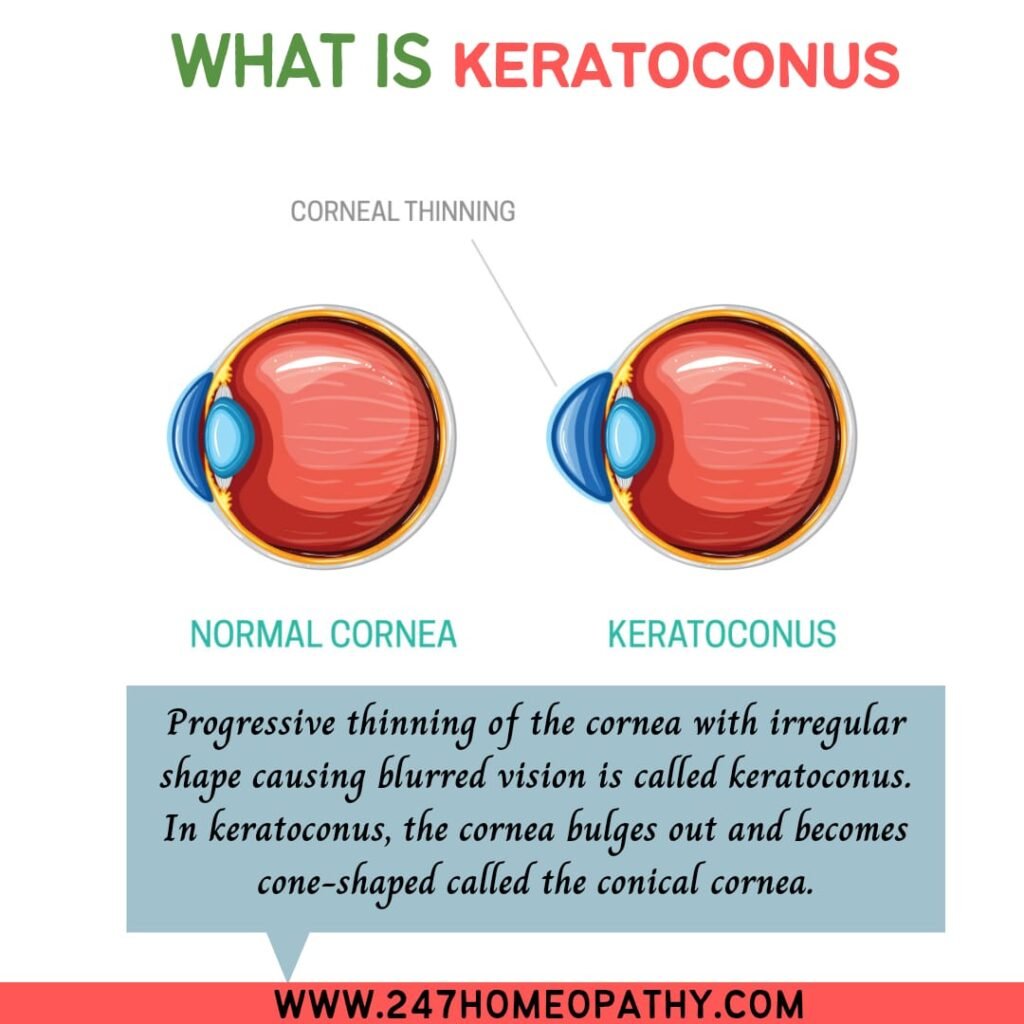
Keratoconus
The cornea is an outer protective layer that protects the iris, pupil, and anterior chamber of the eye.
Progressive thinning of the cornea with irregular shape causing blurred vision is called keratoconus. In keratoconus, the cornea bulges out and becomes cone-shaped called the conical cornea.
It usually develops between the ages of 8 and 30. Both men and women get equally affected by this. Etiology:
The exact cause is unknown.
But some studies have shown that:
- There might be some alteration of enzymes like increased epithelial lysosomal enzymes or decreased glucose 6-phosphate dehydrogenase in the epithelium.
- People with connective tissue disorder are at higher risk to develop this condition.
- Some genetic abnormalities like trisomy-21 play a very important role in this.
- Atopic diseases or chronic rubbing in patients with down syndrome and atopic dermatitis.
- Systematic Syndrome Ehler: Ehler-danlos syndrome, osteogenesis imperfecta
Symptoms:
Early keratoconus:
1. Redness and swelling of the eyes
2. Mild blurred vision
3. sensitivity to light
4. Distorted vision
5. Myopia
6. nearsightedness
7. Vision can be corrected by wearing contact lenses
Moderate keratoconus:
Increased corneal distortion
Increased blurry vision
Vision can not be corrected by contact lenses anymore.
Myopia
- Advanced keratoconus:
- Advanced corneal distortion
- Absence Scarring of the cornea
- Bulging of cornea
- Advanced myopia and astigmatism
- Rigid gas permeable contact lenses give better vision.
Severe keratoconus:
Advanced distortion
Scarring of the cornea
Excessive bulging of the cornea
Rigid gas permeable contact lenses do not give better vision.
Diagnosis:
- Topography: to measure the curvature of the eye.
- Eye refraction: to check vision problems with a phoropter and evaluate eyes with a retinoscope.
- Slit-lamp examination
- Keratometry: to rule out the basic shape of the cornea.
Treatment:
In early stages: in early keratoconus vision can be corrected by spectacles and contact lenses, and helps in fixing myopia and astigmatism.
Moderate keratoconus: rigid gas permeable contact lenses should be used because spectacles have no use in moderate keratoconus. A rigid permeable contact lens gives better quality vision and covers the irregularity of the cornea.
Advanced keratoconus: specialize
rigid gas permeable contact lenses are available for fixing the advanced keratoconus.
Severe keratoconus: corneal transplant surgery is required by the patient.
Homoeopathy management:
Euphrasia can be given in dim vision. Everything seems enveloped in a mist. Dim vision as through a veil. Unable to see distant objects while walking in open-air.
Physostigma: it can be given for increased myopia with astigmatism. Trembling vision. Exophthalmos.
Carboneum sulph: carboneum acts well on myopia.